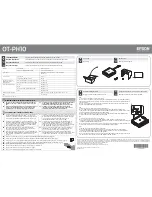
2–Managing Fabrics
Transparent Router
59264-02 B
2-5
Local devices will not discover remote devices until the corresponding inter-fabric
zones are activated on both the local and remote fabrics. To remove a mapping, in
addition to removing the local inter-fabric zone, you must also remove the
corresponding remote inter-fabric zone.
For details of switches supported in a remote fabric, see the Release Notes for the
switch. A user (
admin
rights is required) can configure TR mappings to connect
devices on the local fabric with devices on remote fabrics.
The transparent route between these devices is accomplished by connecting a
remote switch to a TR_port on the switch, mapping the devices together, and then
creating and activating the IFZ (inter-fabric zones) in both fabrics. Each fabric will
contain a matching IFZ. Each IFZ must contain exactly three WWN members: the
local device, the remote device, and the TR_Port attached to the remote fabric.
A TR_Port is used as a bridge between the transparent router’s local fabric and a
remote fabric. A TR_Port uses standard NPIV login methods to attach to the
remote fabric. For remote Brocade or Cisco fabrics, the switch to which the
TR_Port connects must support N-Port ID Virtualization (NPIV) and for Brocade
fabrics the interoperability mode must be configured to InteropMode=0. The
TR_Port logs into the remote fabric using the WWN of the TR_Port. The TR_Port
accesses fabric services of the remote fabric, such as Name Server and
Management Server, and may receive registered state change notifications
(RSCNs). The TR_Port uses FDISCs to login proxies for devices attached to an
N_Port on the switch. Any of the switch 8Gb ports may be configured as a
TR_Port.
NOTE:
When a local device is mapped over a TR_Port to a remote device, the local
device and its TR_Port appear as an NPIV connected device in the remote
fabric. It is possible, though not recommended, to map such a local device
over a second TR_Port to a local device in a second local fabric. In this
case, if you merge the two local fabrics, the transparent route becomes
inactive for the devices that now have a path over an ISL, and an alarm is
generated.
NOTE:
Be sure to configure the TR_Port before connecting the remote fabric to the
switch. If the remote fabric is connected to a port on the switch that is not a
TR_Port, the two fabrics may establish an E_Port connection and the local
and remote fabrics may merge. This mixed fabric is not a supported
configuration. If the port type is changed to TR_Port after connecting the
remote fabric, a port reset may be required to completely establish the TR
connection.
















































